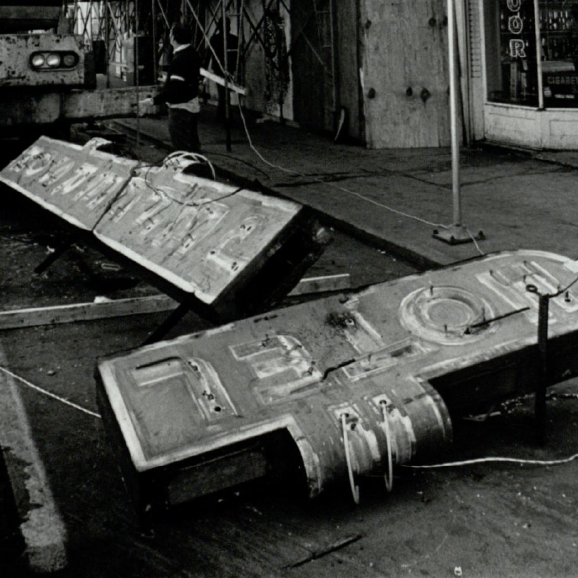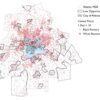Nowadays, many take homelessness for granted.
Some see it as a regrettable but permanent condition of urban life that defines a permanent subpopulation—the homeless, or “chronically” homeless, to use the official language of policy makers and service providers. 1 But this way of thinking and talking about housing insecurity is relatively new. During the so-called golden age of capitalism between 1945 and 1973, Americans tended to view homelessness as a temporary circumstance caused by some unforeseen calamity such as fire or flood. If pressed to identify a place where homelessness constituted a way of life, many would have pointed to skid row. 2
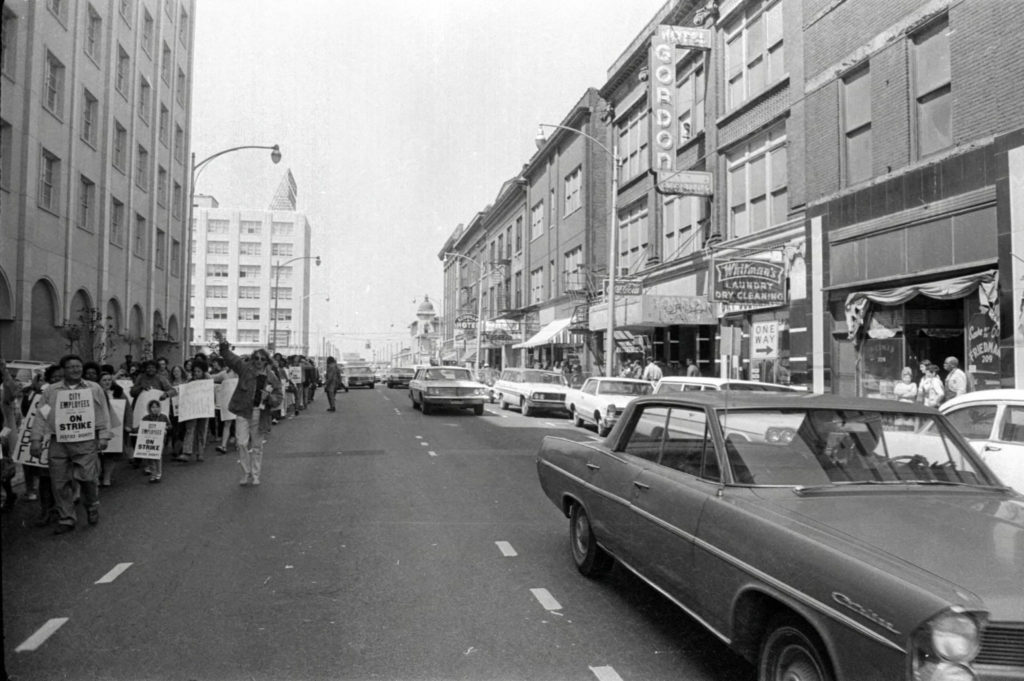
Bowerys large and small formed an archipelago of cheap hotels, all-night bars, labor pools, blood banks, and mission houses reaching across urban America. Far from being the last stop for broken-down alcoholics in full retreat from social affiliation, as both the popular media and mainstream scholarship insisted, skid rows were self-sustaining, working-class ecosystems organized around casual labor and integrated into the spatial dynamics of capitalist urbanization. 3 The physical and social infrastructures of skid row, especially single-room occupancy hotels (SROs), gave downtown homelessness its distinctively fixed character. As Charles Hoch and Robert A. Slayton argued almost thirty years ago, skid row was a place where homelessness had a home. 4
By the 1970s, however, the Bowerys of America were rapidly imploding as market conditions and public policies combined to undermine the viability of SROs. When the institutional anchor of skid row could no longer hold under the strain of these forces, homelessness was set adrift, morphing from a place-bound condition to a condition of placelessness. This seismic shift elevated the “new” homelessness (as distinct from the “old” homelessness of skid row) to a matter of nationwide public concern during the double-dip recession of 1980–1982, which ranked as the worst crisis of global capitalism since the Great Depression.
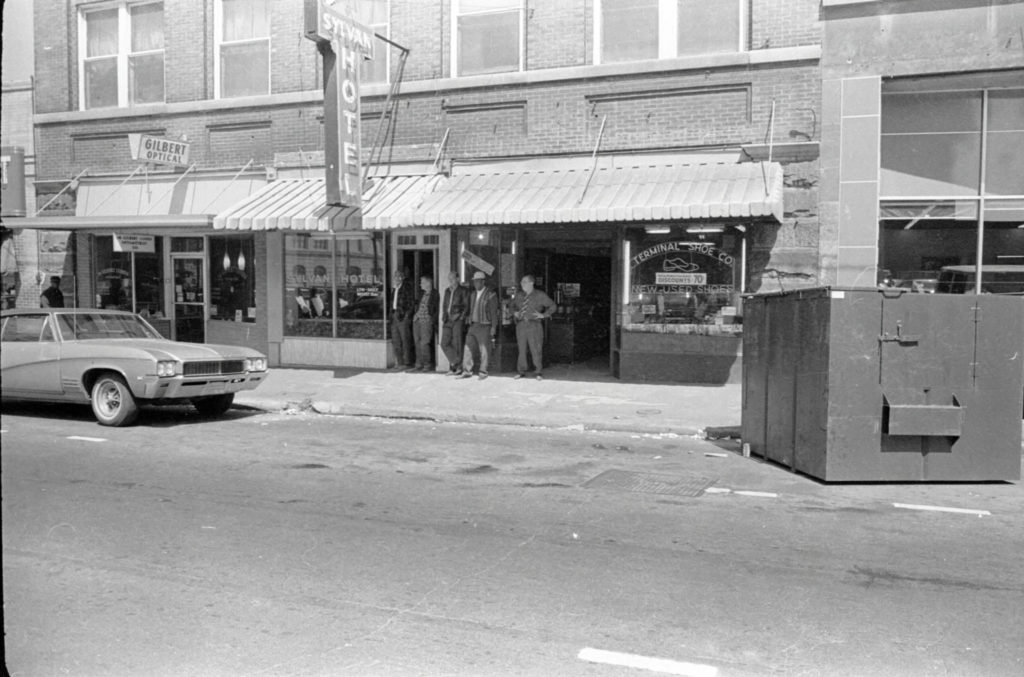
From across the country came alarming reports that downtown public spaces were being overrun by a free-floating population of younger men, blacks, Hispanics, even families, women, and children. In 1984 the Department of Housing and Urban Development (HUD) estimated that the number of people living on the streets and in emergency shelters hovered at around a quarter of a million, far less than the three million claimed by advocates yet a stunning increase from just a few years earlier. 5
This essay traces the rise and fall of Atlanta’s skid row. It situates the transition from the old to the new homelessness in the context of urban restructuring during the 1970s and early 1980s. The profitability crisis of these years brought the golden age of capitalism to a close, ratcheted up the intensity of interurban competition, and reconfigured urban governance along neoliberal lines. 6 Against the harsh backdrop of shrinking tax bases and federal cutbacks to cities, entrepreneurial urban regimes attempted to strengthen their competitive position by turning downtowns into showcases of spectacle, consumption, and gentrification. Skid rows proved no match for the drivers of downtown redevelopment, and their demise signaled the growing strength of neoliberal urbanism across the board. 7 But in sweeping away the cheap hotels that sustained skid row, the engineers of urban renaissance changed the form, not the fact, of downtown poverty. Indeed, precisely because the new homelessness lacked the spatial mooring provided by SROs, it posed an even graver threat to downtown revitalization than did the old homelessness. No sooner had homelessness been set free by the destruction of low-income housing than urban regimes scrambled to pin it back down. In time, a new institutional infrastructure of homeless social provision would be built from the ground up, its aim to move homeless people from the privileged urban core to what Talmadge Wright calls “refuse spaces” a safe distance from downtown. 8 This policy of poverty displacement has been the anchoring principle of Atlanta’s homeless management complex for the last two decades.
The Fall of the South Central Business District
On January 7, 1974, Maynard Jackson was sworn into office as Atlanta’s first black mayor. The city whose well-being he pledged to uphold could was characterized by vast economic and racial inequalities, which were nowhere more evident than in skid row, located in the southern half of the central business district (CBD). This area was also home to the Georgia State Capitol, City Hall, and Fulton County Court House. Towering above the “winos” and politicos who crossed paths every day were the bell towers of Central Presbyterian Church, the Catholic Shrine of the Immaculate Conception, and Trinity United Methodist Church—well-endowed congregations that had been established before the Civil War. From his office at City Hall, Jackson could survey this jarring juxtaposition of poverty and power, grime and grace. Indeed, skid row was a perfect example of the “other Atlanta” invoked in his inaugural address, 9

The rise and fall of skid row reflected Atlanta’s long history of uneven development. When the tracks of the Georgia, Macon & Western, and Western & Atlantic Railroads reached Atlanta in the 1840s, they formed an iron ribbon that would eventually divide the city into two parts, the South CBD and North CBD. After the Civil War Atlanta rose to become an important regional distribution center as indicated by its unofficial title, the “Gate City.” Dozens of merchant houses sprang up along Whitehall Street, the primary commercial corridor running south from the railroad tracks to Mitchell Street. Profits flowing through these retail and wholesale establishments fueled a local building boom that put the South CBD at the cutting edge of commercial real estate development. 10 A city atlas published in 1878, for example, showed an oasis of multi-story brick structures covering the twelve-block area bordered by Decatur, Forsyth, Pryor, and Mitchell Streets. Beyond this commercial epicenter, the built environment thinned out to become a checkerboard of small frame structures and empty lots. 11
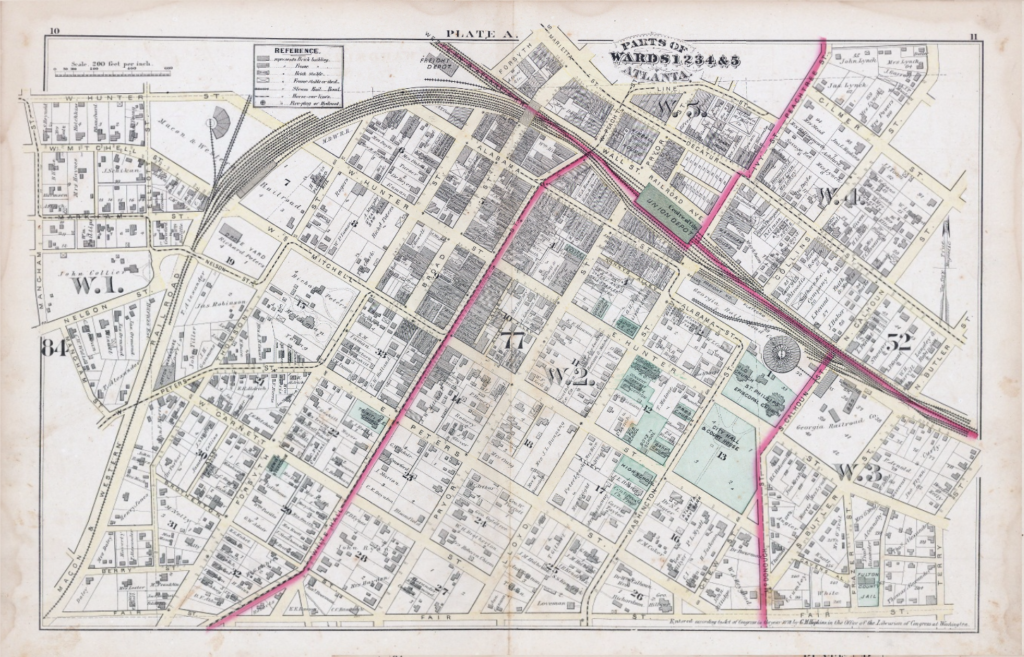
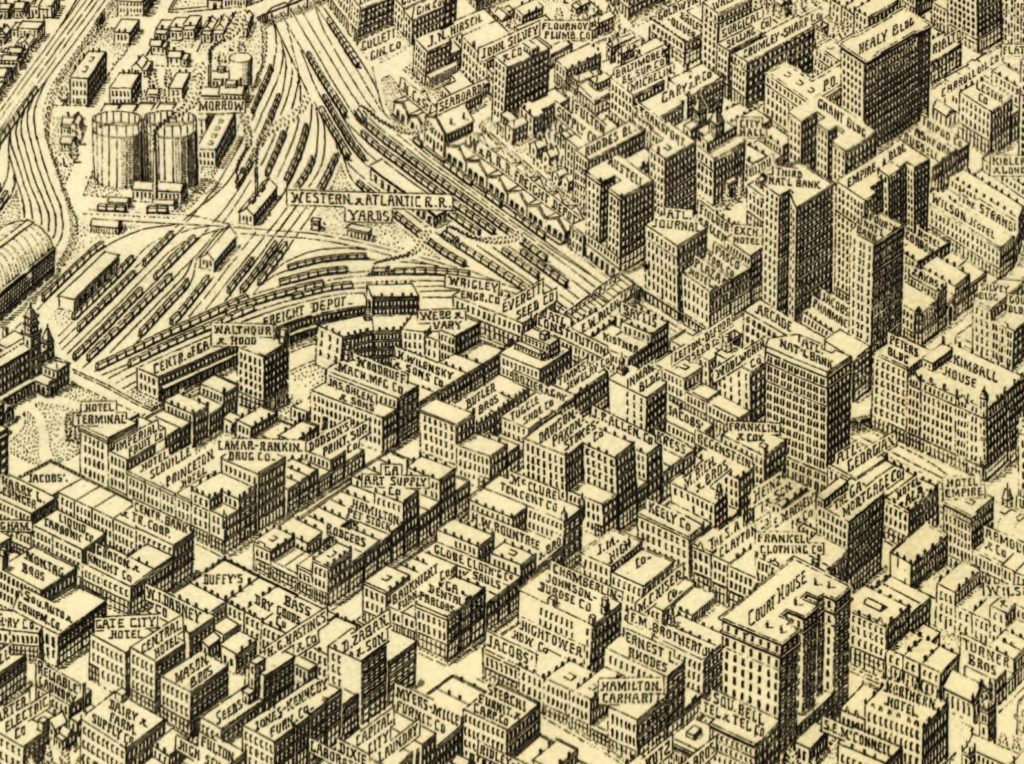
By the turn of the century, however, the South CBD was losing ground to a new competitor. The construction of viaducts spanning the railroad tracks at Peachtree and Washington Streets knitted the two halves of the CBD together, and in so doing created rich investment opportunities north of Five Points, the hub of Atlanta. A new crop of steel-framed office towers and hotels came to dominate the North CBD’s skyline after the debut of the first skyscraper in 1892, forming a sharp contrast with the older, low-rise brick buildings of Whitehall Street. 12 As the northward migration of commercial real estate activity accelerated during the first half of the twentieth century, it left behind a business district whose glory days were clearly in the past. Property values in the South CBD declined, many commercial structures fell into disrepair, and landlords grew less picky about their tenants. This vicious circle of disinvestment and decay created the ideal environment in which the seeds of skid row could germinate.
Even so, the South CBD remained a popular shopping destination during the three decades following the Second World War. White customers from affluent Buckhead and the fast-growing suburbs continued to patronize Rich’s flagship department store on Alabama Street. But it was the purchasing power of black consumers that was chiefly responsible for pumping economic life into the South CBD. 13 In the vicinity of Rich’s stood a large number of grocery stores, drugstores, shoe stores, clothing stores, and other small retail establishments that catered to the “bus transfer market.” At the end of every workday, thousands of black Atlantans rode the bus from their jobs to Five Points, got off to do their evening shopping, and then transferred to other buses that carried them and their purchases to homes scattered across south, west, and east Atlanta. One study reported that at its peak around 1970 the South CBD attracted 100,000 shoppers a week, making it the fifth largest retail center in metropolitan Atlanta and the only one “serving a predominantly moderate and low income clientele.” 14

A deadly mix of market conditions and policy choices undermined the bus transfer market during the 1970s. The rise of regional shopping centers in the metropolitan region dealt a serious blow to the downtown retail trade, resulting in a 35 percent drop in the CBD’s retail employment between 1970 and 1975. 15 But the decline of the South CBD cannot be blamed solely on market forces. Equally important was the decision of city officials and business leaders to build a rapid-rail transit system anchored in the South CBD, despite studies showing that if the purpose of public transportation was to get Atlantans from their homes to work and back, it made far more sense to expand existing bus services. Ratified by the voters of Atlanta, Fulton County, and DeKalb County in 1971, the Metropolitan Atlanta Transit Authority (MARTA)’s rail system sealed the fate of the South CBD by destroying the physical infrastructures and social networks that made the bus transfer market viable.
This was no accident. In the minds of business leaders and city planners, rapid-rail would energize downtown redevelopment by eradicating a highly visible black working-class shopping district which, they believed, was a deterrent to upscale consumerism. Given the high priority assigned to class and racial segregation in the planning process, the decision to locate the Five Points train station in the heart of the bus transfer market should be seen as a logical extension of the massive urban renewal, highway construction, and slum clearance projects that, to borrow N. D. B. Connolly words, made Jim Crow “more concrete.” 16 The architects of federally-subsidized redevelopment bulldozed a ring of impoverished black neighborhoods on the south, west, and east sides of downtown Atlanta. African Americans made up 95 percent of the estimated 68,000 people who were displaced in this frenzy of creative destruction between 1956 and 1966. 17 The MARTA project of the 1970s thus picked up where urban renewal and highway construction left off, though it was now black shoppers rather than black residents who found themselves in the crosshairs of downtown regeneration. As Larry Keating explains, 18
The Rise of Atlanta’s Skid Row
Atlanta’s “junior-sized” skid row, as one journalist referred to it in 1958, was the South CBD in microcosm. 19 In 1974 Jim Merriner, a Constitution reporter fresh out of college, was given the assignment of investigating the underbelly of downtown Atlanta. After hitting the streets and making a number of local contacts, he published a two-part exposé on the sights, sounds, and smells of the area. 20 As a historical source, Merriner’s reportage must be handled with care. He was unable to resist the temptation to sensationalize his material, leaving readers with the false impression that deviance and disorder ran rampant in the dingy haunts of skid row. On the other hand, Merriner assembled a trove of information from which we can discern how skid row actually worked for both its residents and the many actors who extracted profits from their labor.
In a lead that set the overall tone for his piece Merriner pronounced,
The squalor of a skid row just a few blocks from the Capitol repels businesses, shoppers and tourists, perpetuates a treadmill of despair for winos and threatens to ruin the southern half of downtown Atlanta.21
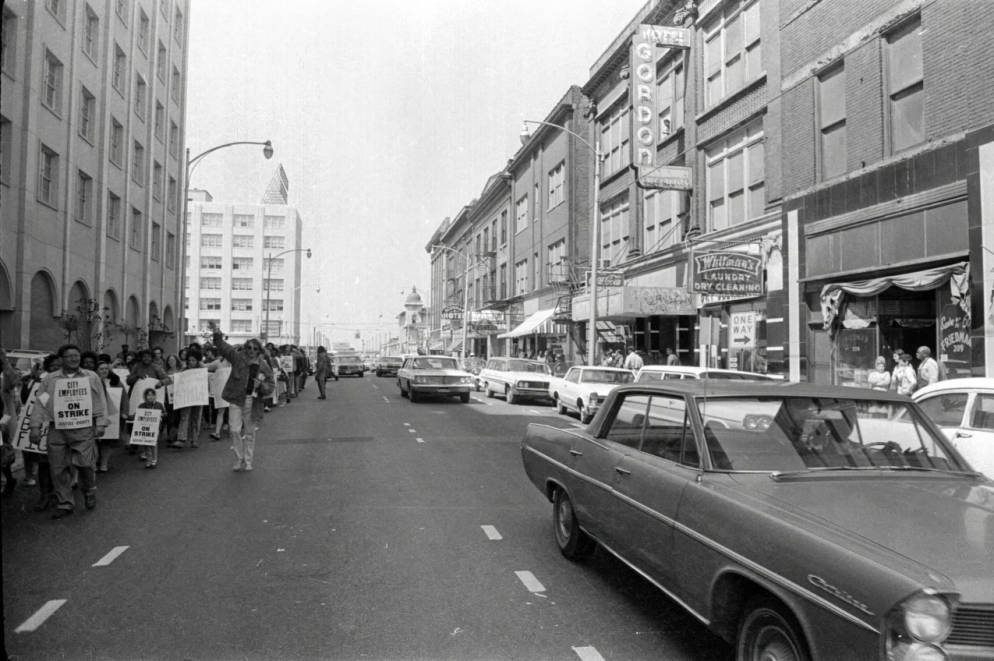
What followed was a lurid portrait of disaffiliation, anomie, and undersocialization—labels used by mainstream sociologists to characterize and caricature the people of skid row. 22 In the style of a modern-day Jacob Riis, he led his readers on a tour of the nine square blocks enclosed by Decatur, Pryor, Mitchell, and Broad Streets, and populated by an estimated two-thousand “winos,” Merriner’s catchall for the local population. He observed that “brigades of diseased, ill-clothed, malnourished, toothless, penniless, lone drunks” rented $3-a-night rooms in nearby flophouses, guzzled King Cotton wine at $1.05 a bottle, polished off shaving lotion and paint thinner when nothing better was available, rummaged through dumpsters and scavenged for dead pigeons, cycled between jail and the emergency room of nearby Grady Hospital, and counted the days until the county coroner finally came to take their worn-out bodies away. 23
For an insider’s perspective on skid-row survival strategies, Merriner turned to a veteran named Bennie. 24 Local blood banks did a brisk trade, Bennie told him, paying $6 for the plasma that could be extracted from a pint of blood. While state law imposed a weekly limit of two donations per person, Bennie and his friends had little trouble evading this restriction by keeping several blood banks in play. Public health regulations also prohibited blood banks from taking blood from anyone who exhibited the “stigmata of intoxication,” but Bennie assured the reporter that being “half sober” was usually good enough to pass the test. These examples of “Wino cunning,” as Merriner characterized them, produced a population of walking medical emergencies. The Grady Hospital staff told him that the Bennies of skid row had to pass the “three-fly sign” before being admitted to the emergency room: “When a patient allows three flies to land on him without swatting, the doctors conclude that he needs immediate attention.”
While it is hard not to bridle at Merriner’s voyeuristic focus on physical squalor and human degradation, the empirical data he assembled can be used to reconstruct the infrastructures and operations of skid row. The institutional ecosystem of skid row was made up of eight labor pools, eight bars and cheap restaurants, three single-room occupancy hotels (SROs), two mission houses, and two blood banks—all of which operated within three blocks of Plaza Park, a popular gathering point for skid row residents. 25
Table 1: The Institutional Ecosystem of Atlanta’s Skid Row, 1974
Bars, Labor Pools, Hotels, Mission Houses, and Blood Banks
From: Merriner, Jim “The Owners: Is Atlanta’s Skid Row a Problem Without a Solution?” Atlanta Constitution, Aug. 6, 1974, 15-A
| BARS WITH HIGH ARREST RATES | |
| Name | Address |
| Tim’s Tavern | 174 Whitehall Street |
| Miami Bar | 135 Whitehall Street |
| Kozy Kitchen | 265 Whitehall Street |
| Black Hawk Bar | 62 Decatur Street |
| Broadway Café | 187 Mitchell Street |
| Royal Bar and Grill | 163 Pryor Street |
| Jimmy’s Lounge | 139 Mitchell Street |
| James Steak and Seafood House | 99 Broad Street |
| LABOR POOLS | |
| Name | Address |
| Add-a-Man Labor Service | 126 Mitchell Street |
| Zip Labor | 118 Forsyth Street |
| AAA Labor Services | 180 Whitehall Street |
| Kelly Labor | 173 Whitehall Street |
| Employers Overload | 171 Pryor Street |
| Peakload | 215 Pryor Street |
| Labor Force of Atlanta | 287 Techwood Drive |
| Labor Pool of Atlanta | 168 Trinity Avenue |
| Trueman | 193 Trinity Street |
| HOTELS | |
| Name | Address |
| Gordon Hotel | 221 Mitchell Street |
| Sylvan Hotel | 233 Mitchell Street |
| Jeffersonville Hotel | 225 Mitchell Street |
| MISSION HOUSES | |
| Name | Address |
| Atlanta Guidance Center | 184 Pryor Street |
| Hotel Rehabilitation Center (Samaritan House) | 130 Mitchell Street |
| BLOOD BANKS | |
| Name | Address |
| Blood Bank Foundation | 138 Mitchell Street |
| Community Blood Donor Center | 132 Whitehall Street |
The numerical predominance of labor pools, seven of which belonged to out-of-state corporations, reflected a simple truth that Merriner failed to grasp in his eagerness to hyperbolize: the small world in which Bennie lived was a major collection point for day laborers who worked throughout the metropolitan area. The warehouses, construction sites, and custodial services of Atlanta would have been hard pressed to turn a profit without access to skid row’s population of precarious workers. Many of the men who packed the waiting rooms of the labor agencies hoping for a $2-an-hour job were skid row residents like Bennie. Every morning, agency trucks and vans combed the streets of skid row, recruiting men as they emerged from Mitchell Street hotels or milled around Plaza Park. While Merriner claimed that most skid row residents would rather stake out a park bench and nurse their hangovers than look for work, the fleet of agency trucks circling the nodal points of skid row suggested otherwise: plenty of local men depended on the paychecks provided by the labor pools.
The labor offices on Mitchell, Forsyth, Pryor, Whitehall Streets, and Trinity Avenue were folded into the institutional life of skid row in ways that went beyond providing jobs. Take the case of the Atlanta Recovery Center, an institutional landmark of the neighborhood ever since its establishment by Methodist minister Howard Gardner in 1969. An ex-convict and recovering alcoholic, the “chaplain of Atlanta’s Skid Row,” as he was nicknamed by an admiring municipal judge, turned his Recovery Center into a treatment facility for alcoholics and a night shelter for “penniless men who would otherwise sleep in alleys.” 26 It is unlikely that Gardner would have been able to launch his street ministry or keep it afloat without the help of George Zakas, a local businessman who owned the building in which the Recovery Center was originally housed. Zakas also owned and operated AAA Labor Service, located a few doors down from the Recovery Center. Asked by a reporter why he allowed skid row’s chaplain the use of his building rent-free after spending thousands of dollars on its renovation, Zakas explained, “Well I’m in the labor business. . . . We’ve got to deal with these people all day, you know, and we know what predicament they’re in. 27 Here was a partnership that leveraged the synergies of business profits and social services: the Recovery Center supplied AAA Labor Service with reliable workers who were committed to their sobriety, and in return, AAA Labor Service enabled the Recovery Center to expand its treatment program into job training and placement.
The Fall of Atlanta’s Skid Row
Merriner’s harrowing journey to skid row and back appeared just as the institutional framework of the neighborhood he described was falling to pieces. Downtown business interests who held out hope that MARTA’s rapid-rail system would jumpstart upscale commercial and residential development around the Five Points train station were sorely disappointed. The implosion of the bus transfer market created havoc among local businesses and caused property values to continue their downward spiral. Faced with deteriorating market conditions, owners of aging hotels in the South CBD and elsewhere had little incentive to maintain or improve their properties. The result was a self-feeding loop of decay, disinvestment, and devaluation. One study found that between 1970 and 1986 the number of SROs in Atlanta dropped from twenty-three to four, while the inventory of rooms fell from well over 2,000 to 233 (see the complementary ATLMaps layer and Table 2, both below). 28
Table 2: Single-Room Occupancy Hotels in Atlanta
Hotels That Closed Between 1970 and 1986
From: Paper by Steve Cleghorn, Department of Sociology, Emory University, Project Files: Service Centers—Homeless # 3, Central Atlanta Progress Records, Atlanta History Center. Note: Cleghorn compiled this list with the help of historian Franklin Garrett.
| Name of Hotel | Address | # of Rooms |
| Avon Hotel | 5 Houston St. NE | 45 |
| Capital Hotel | 13 Pryor St. NE | 65 |
| Bentley Hotel | 12 Pryor St. SW | 39 |
| Cox-Carlton Hotel | 683 Peachtree St. NE | 138 |
| Cunningham’s | 214 Auburn Ave. | ? |
| Dinkler Plaza Hotel | 98 Forsyth St. NW | ? |
| Duke Hotel | 420 Piedmont Ave. NE | ? |
| Frances Hotel | 343 Peachtree St. NE | 48 |
| Georgia Hotel | 114 Luckie St. NW | 250 |
| Gordon Hotel | 211 Mitchell St. SW | 110 |
| Hampton Hotel | 35 Houston St. NE | 107 |
| Peachtree Plaza Hotel | Peachtree St. NE | 70 |
| Imperial Hotel | 355 Peachtree St. NE | 104 |
| Intown Motor Hotel | 89 Luckie St. NW | 73 |
| Jefferson Hotel | 87 Pryor St. SW | ? |
| Johnson Hotel | 182 ½ Auburn Ave. NE | ? |
| Le Pavilion Hotel | 14 17th St. NE | 31 |
| Pershing Point | 1428 Peachtree St. | 200+ |
| Ritz Hotel | 103 Luckie St. NW | ? |
| Sylvan Hotel | 233 Mitchell St. SW | 37 |
| Travelers Hotel | 139 Luckie St. NW | 41 |
| Georgian Terrace Hotel | 659 Peachtree St. NE | 250+ |
| YMCA Downtown | 145 Luckie St. NW | 350 |
| TOTAL | 1,958+ |
Hotels Still Operating in 1986
| Name of Hotel | Address | # of Rooms |
| Falcon Hotel | 180 Luckie St. NW | 88 |
| Mitchell St. (Scoville) Hotel | 225 Mitchell St. SW | 45 |
| Butler St. YMCA | 22 Butler St. | 50 |
| Ponce De Leon Hotel | 551 Ponce de Leon Ave | 50 |
| TOTAL | 233 |
By 1987 this vital stock of low-income housing had for all practical purposes ceased to exist: only a pair of SROs remained, including the Falcon Hotel, an interior of which is pictured below. When the downtown Hampton, Capitol, and Avon hotels fell victim to redevelopment in 1983, the Constitution was forced to acknowledge that the creation of a “brassy new city” came at a significant cost. “The metamorphosis from cheap rooms to fancy businesses,” wrote the editor, “means displacement for some Atlantans, most of whom are already poor and dispossessed.” 29 The demise of Atlanta’s cheap hotels closely tracked the rapid disappearance of SROs across the country as property owners, business organizations, and political leaders earmarked skid rows for commercial redevelopment. The absence of a strong coalition of housing advocates of the kind to be found in New York and San Francisco meant that Atlanta officials could safely wash their hands of the problem, permitting SROs to vanish quietly and permanently from the city map.
Single Residency Occupancy Hotels of Atlanta

Skid row’s labor pools were also buckling under the weight of these developments. The proliferation of suburban home improvement centers and the arrival of large numbers of Hispanic immigrants reconfigured the supply lines of day labor, causing informal labor pools to shift from the CBD to the northern urban periphery. 30 Home Depots supplanted skid row as the new catch-out area for day laborers. If historians were in the business of issuing death certificates, skid row’s would be dated 1988, the year bulldozers demolished the thirty-nine-year-old Plaza Park to make way for Underground Atlanta. This publicly subsidized entertainment-festival complex that, Atlantans were assured by Mayor Andrew Young, would jumpstart the economic redevelopment of the South CBD. Like so many other downtown pie-in-the-sky megaprojects funded by tax dollars, Underground Atlanta turned out to be a financial disaster for all concerned, homeless people most of all.
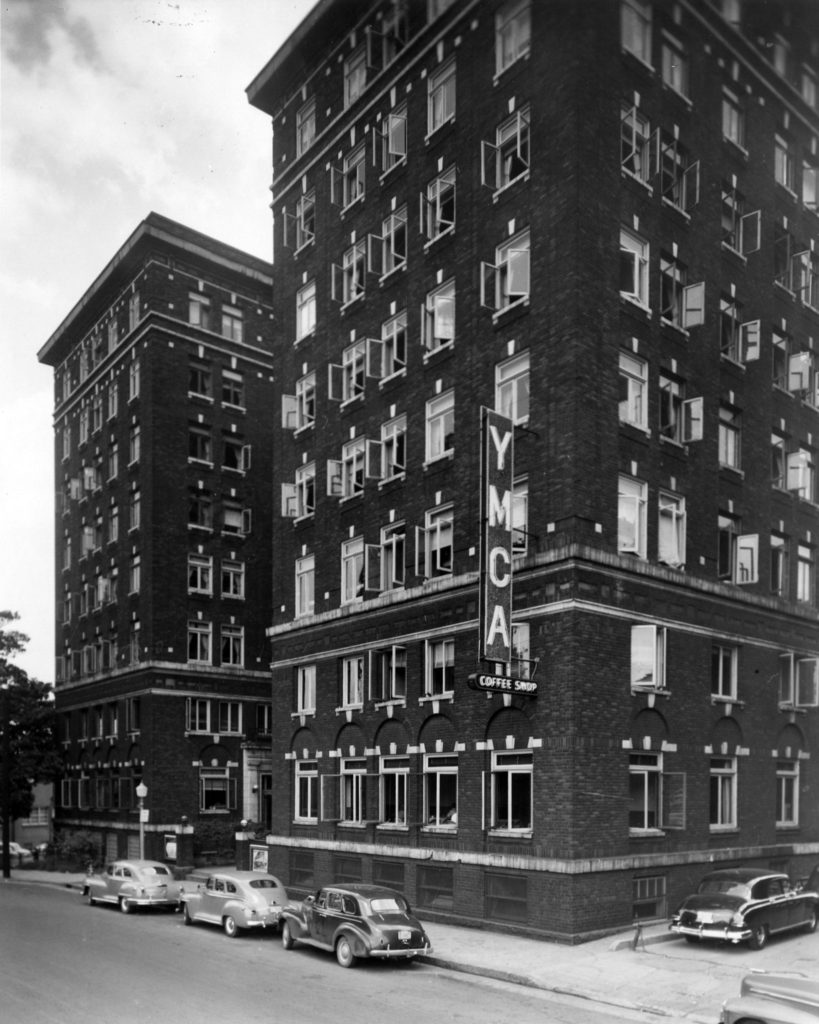
Skid row was gone, but homelessness was not. The crisis of the new homelessness had many causes, but none was more immediate or important than the loss of SRO housing, the institutional mainstay of skid row. The same city officials and business leaders who worked tirelessly to remove skid row and its cheap hotels from the downtown map expressed shock and dismay when, in the late 1970s and early 1980s, homeless people suddenly began appearing in the doorways, under the viaducts, and in the streets of the CBD. 31 Three decades later, Atlanta has a vast institutional infrastructure of intake centers, treatment programs, and supportive housing facilities whose unstated goal is to funnel homeless people from the CBD to impoverished black neighborhoods on the southwest side of the city. Yet despite all the promises made and millions spent, homelessness remains stubbornly entrenched in downtown Atlanta. The critical shortage of affordable housing is the reason why. A generation ago, the sacrifice of skid row and its network of cheap hotels seemed a small price to pay for a “brassy new city”: it turned out to be higher than anyone imagined.
Cover Image Attribution: Photo by Kenneth Walker. AJCP159-006h, Atlanta Journal-Constitution Photographic Archive. Special Collections and Archives, Georgia State University Library. Copyright Atlanta Journal-Constitution. Courtesy of Georgia State University Library.
Citation: Steffen, Charles. “The Rise and Fall of Atlanta’s Skid Row.” Atlanta Studies. December 06, 2016. https://doi.org/10.18737/atls20161206.
Charles G. Steffen is Professor of History at Georgia State University and the author of The Mechanics of Baltimore: Workers and Politics in the Age of Revolution, 1763–1812, From Gentlemen to Townsmen: The Gentry of Baltimore County, Maryland, 1660–1776, and Mutilating Khalid: The Symbolic Politics of Female Genital Cutting. He is currently working on a book tentatively titled Downtown Delusions: The Politics of Homelessness in Atlanta.
- The scholarly literature on homelessness is quite large. For two recent works that examine homelessness as a site of neoliberal social regulation, see Craig Willse, The Value of Homelessness: Managing Surplus Life in the United States (Minneapolis: University of Minnesota Press, 2015); Vincent Lyon-Callo, Inequality, Poverty, and Neoliberal Governance: Activist Ethnography in the Homeless Sheltering Industry (Toronto: University of Toronto Press, 2008).[↩]
- Kenneth L. Kusmer provides a useful overview of homelessness and skid rows during the post-World War II period in Down and Out, on the Road: The Homeless in American History (New York: Oxford University Press, 2002), 221–238.[↩]
- Ibid, 230–232. For older treatments of skid rows as containment areas for disaffiliation, see Donald Bogue, Skid Row in American Cities (Chicago: University of Chicago Press, 1963); Howard Bahr ed., Disaffiliated Man: Essays and Bibliography of Skid Row, Vagrancy and Outsiders (Toronto: University of Toronto Press, 1970); Howard M. Bahr and Theodore Caplow, Old Men Drunk and Sober (New York: New York University Press, 1973); Samuel E. Wallace, Skid Row as a Way of Life (Totowa, N.J.: Bedminster Press, 1965). Kim Hopper provides an overview of ethnographic work on homelessness in Reckoning with Homelessness (Ithaca and London: Cornell University Press, 2003), 57–116.[↩]
- Charles Hoch and Robert A. Slayton, Old Homeless and New: Community and the Skid Row Hotel (Philadelphia: Temple University Press, 1986).[↩]
- Kusmer, Down and Out, on the Road, 239.[↩]
- My understanding of the profitability crisis of the mid 1960s and 1970s is informed by Anwar Shaikh, “The First Great Depression of the 21st Century,” in Socialist Register 2011: The Crisis This Time, eds. Leo Panitch, Greg Albo, and Vivek Chibber (New York: Monthly Review Press, 2010), 44–63; and Michael Roberts, The Long Depression: How It Happened, Why It Happened, and What Happens Next (Chicago: Haymarket Books, 2016), 59–64. For the reconstitution of urban governance under neoliberal capitalism, see David Harvey, “From Managerialism to Entrepreneurialism: The Transformation in Urban Governance in Late Capitalism,” Geografiska Annaler. Series B, Human Geography, 71 (1989): 3–17; and Neil Brenner and Nik Theodore, eds., Spaces of Neoliberalism: Urban Restructuring in North America and Western Europe (Malden, Mass.: Blackwell, 2002).[↩]
- The classic work on neoliberal urbanism remains Neil Smith, The New Urban Frontier: Gentrification and the Revanchist City (New York and London: Routledge, 1996).[↩]
- Talmadge Wright, Out of Place: Homeless Mobilizations, Subcities, and Contested Landscapes (Albany, N.Y.: State University of New York Press, 1997), 106–109.[↩]
- Atlanta Constitution, Jan. 8, 1974, 7A.[↩]
- James Michael Russell, Atlanta, 1847–1890: City Building in the Old South and New (Baton Rouge and London: Louisiana University Press, 1988), 116–145.[↩]
- G. M. Hopkins, City Atlas of Atlanta, Georgia, from Actual Surveys and Records (Baltimore: Hopkins, 1878), http://disc.library.emory.edu/atlantamaps/1878-atlas/.[↩]
- Elizabeth Anne Mack Lyon, “Business Buildings in Atlanta: A Study in Urban Growth and Form” (PhD diss., Emory University, 1971), 202–297.[↩]
- Philippa Ahuja and Ned O’Hearn, Commercial Revitalization in Atlanta (Atlanta: Research Atlanta, 1978).[↩]
- Ibid, 7, 10.[↩]
- Ibid, 6.[↩]
- N. D. B. Connolly, A World More Concrete: Real Estate and the Remaking of Jim Crow South Florida (Chicago: University of Chicago Press, 2014).[↩]
- Larry Keating, Atlanta: Race, Class, and Urban Expansion (Philadelphia: Temple University Press, 2001), 93.[↩]
- Ibid, 108–109.[↩]
- Atlanta Constitution, May 11, 1958, 7B.[↩]
- Ibid, Aug. 5, 1974, 13A; Aug. 6, 1974, 15A[↩]
- Ibid, Aug. 5, 1974, 13A[↩]
- See note 3.[↩]
- Atlanta Constitution, Aug. 5, 1974, 13A.[↩]
- Ibid, Aug. 5, 1974, 13A[↩]
- Atlanta Constitution, Aug. 6, 1974, 15A.[↩]
- Ibid, Apr. 2, 1971, 8B; Mar 7, 1970, 8A.[↩]
- Ibid, Dec. 11, 1969, 11A.[↩]
- Paper by Steve Cleghorn, Department of Sociology, Emory University, Project Files: Service Centers—Homeless # 3, Central Atlanta Progress Records, Atlanta History Center.[↩]
- Atlanta Constitution, Nov. 26, 1983, 2B.[↩]
- Terry Easton, “Geographies of Hope and Despair: Atlanta’s African American, Latino, and White Day Laborers,” Southern Spaces (Dec. 21, 2007); accessed Oct. 28, 2016, https://southernspaces.org/2007/geographies-hope-and-despair-atlantas-african-american-latino-and-white-day-laborers.[↩]
- For the history of homeless regulation in Atlanta see, William Wyatt Holland, “Who is my Neighbor? Framing Atlanta’s Movement to End Homelessness, 1900–2005” (PhD diss., Georgia State University, 2009); and Charles G. Steffen, “The Corporate Campaign against Homelessness: Class Power and Urban Governance in Neoliberal Atlanta, 1973–1988,” Journal of Social History 46 (2012): 170–197.[↩]

